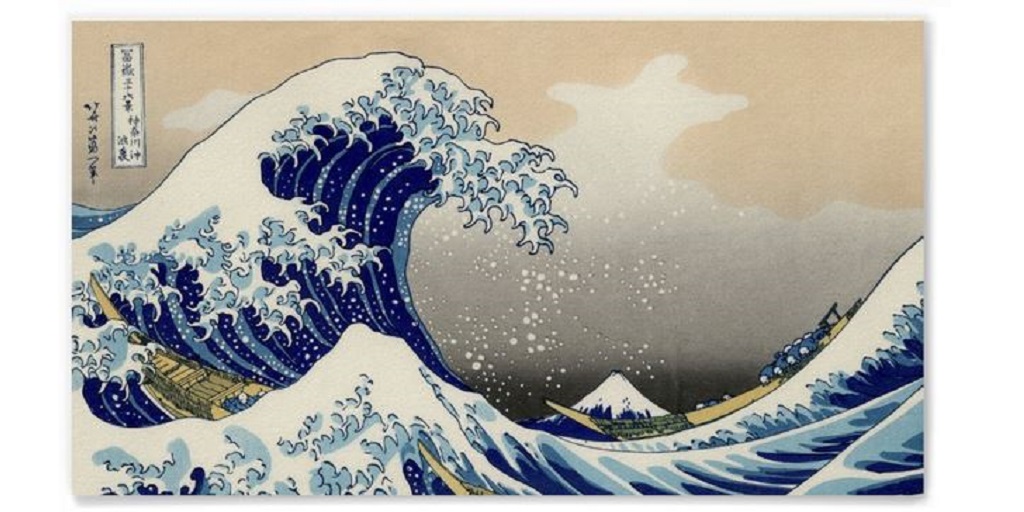Katsushika Hokusai’s “The Great Wave Off Kanagawa,” also affectionately known as “The Great Wave,” is only one of his “Thirty-Six Views of Mt. Fuji,” but it is by far the most memorable.
It has been endlessly reproduced, and in the form of “The Great Wave” art posters, prints, mugs, puzzles, and other gifts and consumer goods, enriches the lives and homes of countless millions around the world.
But what is it that gives this particular “view of Mt. Fuji” such inestimable draw?
To understand this, we need to take a closer look at the political climate of Japan at the time that Hokusai completed this print.
Hokusai likely created this print in the year 1831. This year, during the Edo Period, was approaching the tail end of the system of Sakoku under which Japan had been operating since 1603.
Sakoku, which means “chained country” was a social system under which Japan’s foreign relations were severely restricted. Trade and communication were limited on a fundamental basis.
Almost all travel to Japan from abroad was restricted and average Japanese citizens were not permitted to leave the country.
During the “Sakoku Period,” trade was heavily limited, effectively restricting Japan’s interactions with the outside world to the Chinese and the Dutch through the port of Nagasaki.
While it may seem severe, the purpose was to limit colonial and religious influence, which, during the preceding period, had introduced fairly widespread civil and political strife.
Interestingly enough, the Sakoku Period was one of relatively widespread domestic and political peace for Japan. Though trade and travel were restricted, civil unrest was minimal. Historically, the Sakoku years are looked upon favorably.
But towards the middle of the 1800s, international pressure on Japan, especially from the United States, was mounting. It culminated in Matthew Perry’s forced opening of Japan to the West through the Treaty of Kanagawa.
Back, then, to Hokusai’s emotionally turbulent ukiyo-e print. In it, Mt. Fuji, the metaphorical soul of Japan as a nation and a people, dwindles in the distance.
In the foreground, a huge, “great” wave threatens the shoreline. By apposition, the wave towers ominously over Mt. Fuji.
The sea itself, from which Japan had long drawn its livelihood, and from which foreign powers threatened, is in a state of unrest and violence. Mt. Fuji is stoically stationary in the background.
And yet, by contrast, the elemental wave appears not only to break on the shore of Japan but over Mt. Fuji itself.
It may be only one of thirty-six views, but this is almost certainly the reason that it has had such an impact on the collective mind, whether or not the reason is readily apparent.
“The Great Wave” Art Posters & More
Interested in adding “The Great Wave” art posters or prints to your home, or finding other similarly art-themed gifts?
Visit the Museum of Fine Arts, Boston’s online gift shop at MFAShop.com and take a look through their collection which includes high-quality highlights themed on the art of Hokusai, Van Gogh, Hopper, Renoir, Bierstadt, Parrish, and countless others.



